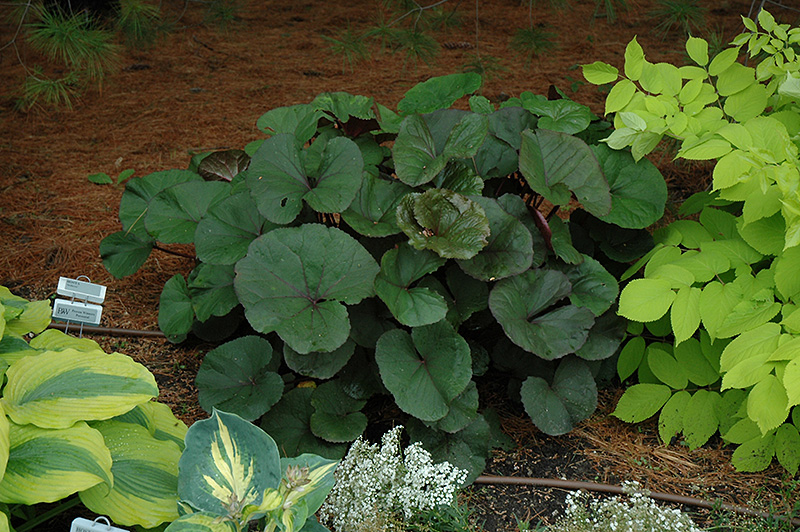Midnight Lady Rayflower
Ligularia dentata 'Midnight Lady'
Plant Height: 26 inches
Flower Height: 4 feet
Spread: 24 inches
Sunlight:
![]()
![]()
Hardiness Zone: 3a
Description:
Very dark copper-purple foliage on purple stems alone make this cultivar worth growing; tall heads of orange-gold flowers crown this visually interesting foliage and provide excellent contrast
Ornamental Features
Midnight Lady Rayflower features bold panicles of gold daisy flowers with orange overtones at the ends of the stems from late summer to early fall. Its attractive large serrated round leaves remain deep purple in color with curious plum purple undersides and tinges of coppery-bronze throughout the season. The deep purple stems are very colorful and add to the overall interest of the plant.
Landscape Attributes
Midnight Lady Rayflower is an herbaceous perennial with an upright spreading habit of growth. Its wonderfully bold, coarse texture can be very effective in a balanced garden composition.
This is a relatively low maintenance plant, and is best cleaned up in early spring before it resumes active growth for the season. Deer don't particularly care for this plant and will usually leave it alone in favor of tastier treats. It has no significant negative characteristics.
Midnight Lady Rayflower is recommended for the following landscape applications;
- Mass Planting
- General Garden Use
- Bog Gardens
Planting & Growing
Midnight Lady Rayflower will grow to be about 26 inches tall at maturity extending to 4 feet tall with the flowers, with a spread of 24 inches. It grows at a medium rate, and under ideal conditions can be expected to live for approximately 20 years. As an herbaceous perennial, this plant will usually die back to the crown each winter, and will regrow from the base each spring. Be careful not to disturb the crown in late winter when it may not be readily seen!
This plant does best in partial shade to shade. It prefers to grow in moist to wet soil, and will even tolerate some standing water. It is not particular as to soil pH, but grows best in rich soils. It is somewhat tolerant of urban pollution. This is a selected variety of a species not originally from North America. It can be propagated by division; however, as a cultivated variety, be aware that it may be subject to certain restrictions or prohibitions on propagation.





